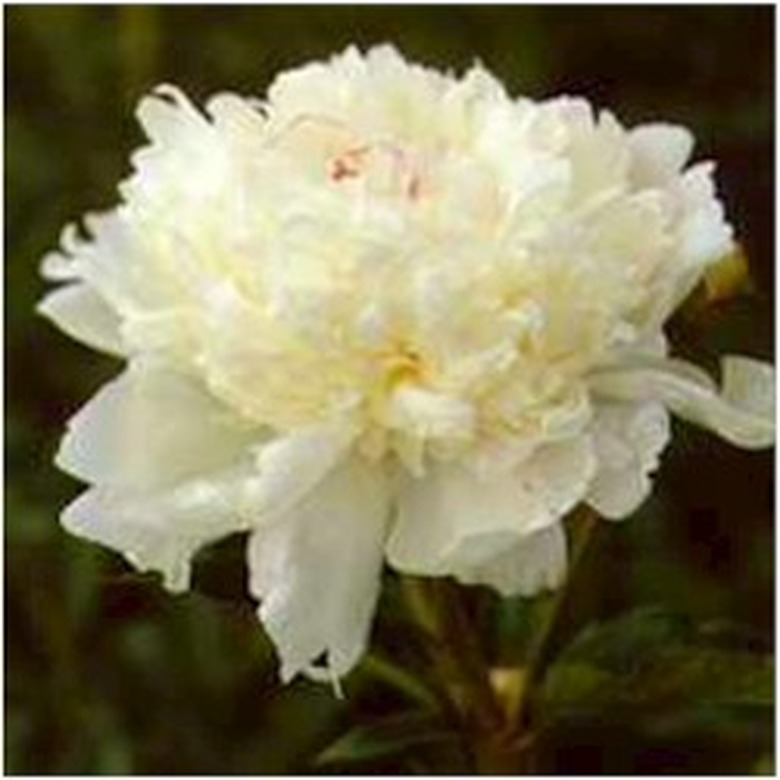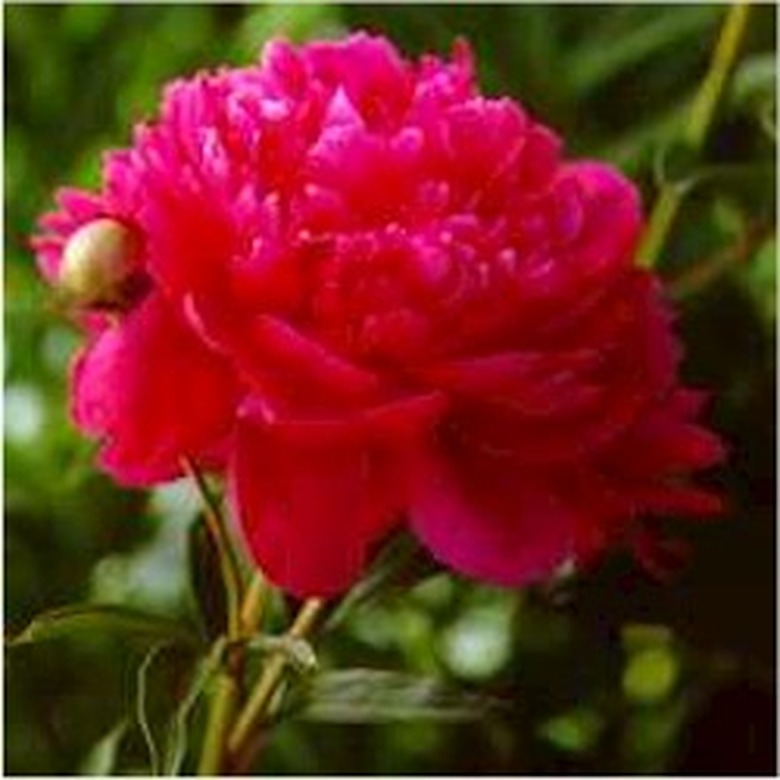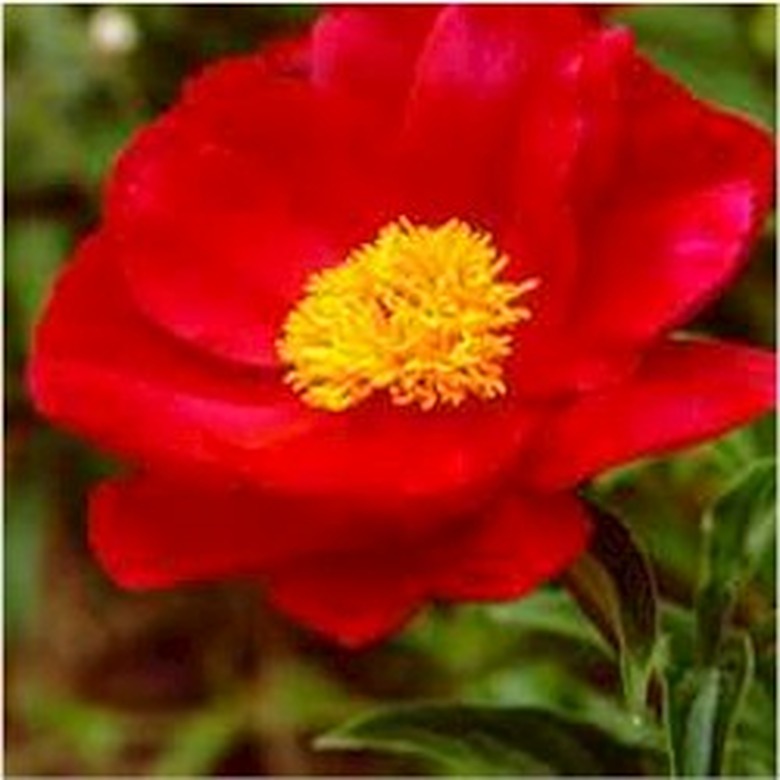Glorious Peonies: The Pride Of India
by Naomi Mathews
A Tad Bit of History
It seems that the Hoosier State adopted more than one official floral emblem over the years. The zinnia held this prestigious title from 1931 until 1957. Then, more than twenty-five years later, a member of the Indiana House of Representatives endorsed a proposal to adopt the peony as Indiana's queen of flowers.
Thus, on March 13, 1957, the peony (Paeonia) was duly adopted by the General Assembly (Indiana Code 1-2-7) as Indiana's official state flower. No specific species or colors were ever designated. This was evidently not an issue, since all peonies are lush and beautiful. They are much loved by the people of Indiana and cultivated in abundance throughout the state. Miss Peony's reign will without a doubt be both endearing and enduring, and with good reason.
- by Naomi Mathews A Tad Bit of History It seems that the Hoosier State adopted more than one official floral emblem over the years.
- Thus, on March 13, 1957, the peony (Paeonia) was duly adopted by the General Assembly (Indiana Code 1-2-7) as Indiana's official state flower.
- No specific species or colors were ever designated.
Some Notes of Interest About the Popular Peony
It is said that the peony (Paeonia) was named after the Greek doctor of gods, Paeon, since it was believed to possess healing qualities. Some prefer to pronounce the name of this beautiful flower with a long "e" (pe – o – ny), while others prefer to call it Paeonia, pronounced as "pay-on -ee- ah."
Some engaging meanings of "Peony" when used as a first name include: compassion, love and good fortune, bashfulness, and happy marriage. Peonies do seem to portray these attributes, don't you agree?
Peonies are a highly prized and popular perennial and are widely grown in flower gardens. Their popularity can no doubt be partially attributed to the fact that they enjoy one of the longest life spans among perennials. They are also very hardy, thrive in most soils with minimal amendment, and are not demanding. What gardeners wouldn't be delighted to grow these carefree beauties in their gardens season after season with so little effort!
- Some Notes of Interest About the Popular Peony It is said that the peony (Paeonia) was named after the Greek doctor of gods, Paeon, since it was believed to possess healing qualities.
For many years, peonies have been one of the most favored of spring flowers for another special reason. In the month of May on Memorial Day, one can see fragrant fresh bouquets of peonies in a splendid assortment of colors in cemeteries. Year after year, peonies are placed as special memorials by family and friends on the graves of their loved ones. In many rural areas peonies can be found displayed at quaint roadside flower stands, waiting patiently to be chosen just for this special day.
Peonies are outstanding as cut flowers. A half dozen fully-opened blossoms will easily fill a vase with long lasting color. Cut several stems of their foliage and tuck them in with the peonies to lend great eye appeal to your spring bouquet. The delightful fragrance of some peonies is reminiscent of the old-fashioned rose.
- For many years, peonies have been one of the most favored of spring flowers for another special reason.
- In the month of May on Memorial Day, one can see fragrant fresh bouquets of peonies in a splendid assortment of colors in cemeteries.
**Herbaceous or Tree Peony — Which One is It?**
**Herbaceous (P. lactiflora)**
Most peonies available in garden centers or nurseries are hybrids of two major classes–herbaceous peonies or tree peonies. Just what are their primary differences?
Almost all herbaceous peonies are descendants of a Chinese species known as P. lactiflora. These hybrids reach 2 to 3 feet in height, having dark green divided leaves that are shiny and very showy. Peony foliage is bold and striking, even in the fall when it usually embraces the reddish colors of autumn.
- **Herbaceous or Tree Peony — Which One is It?
- ** ** Herbaceous (_P.
- lactiflora_)**
Most peonies available in garden centers or nurseries are hybrids of two major classes–herbaceous peonies or tree peonies.
Herbaceous peonies typically bloom in late spring, boasting exotic 3 to 6 inch heavily scented blossoms. Their showy blossoms can be either single or double, while others are anemone-like, having broad outer petals with petaloids in their centers. Herbaceous peonies thrive in USDA Zones 3 to 8, and bloom profusely after a period of cold winter chill.
**Tree Peony (P. suffruticosa)**
Flowering Shrubs Shrubs are among the most versatile of garden plants. They can fill the landscape with color, shape, and texture all year long, with flowers in the spring, lovely foliage in the summer, and berries and bright leaves autumn. They even add shape and texture to the winter garden. Although this bulletin deals mainly with flowering shrubs, the wealth of information can be applied to most any shrub.
- Herbaceous peonies typically bloom in late spring, boasting exotic 3 to 6 inch heavily scented blossoms.
- They can fill the landscape with color, shape, and texture all year long, with flowers in the spring, lovely foliage in the summer, and berries and bright leaves autumn.
Tree peony cultivars are descendants of P. suffruticosa, a Chinese shrub. This variety is an open, somewhat woody deciduous shrub that can reach 6 feet in height. As with herbaceous peonies, tree peonies are long-lived and resent being transplanted, so you should choose their locations with care. Tree peonies are also more hardy to cold than their herbaceous relatives. There are a myriad of varieties to choose from and most nurseries offer them in late winter and very early spring.
The blossoms of tree peonies vary both in size and color, depending on their individual variety. Tree peonies also bloom in early to mid-spring, sporting magnificent bursts of bold color. Some nurseries also offer seedlings that are unnamed, so it's best to buy those when they are blooming so you can choose the colors you want.
- Tree peony cultivars are descendants of _P.
- suffruticosa_, a Chinese shrub.
- As with herbaceous peonies, tree peonies are long-lived and resent being transplanted, so you should choose their locations with care.
Peony Planting Pointers Location
Peonies do best when tubers are planted in early fall, but will also thrive if planted in early spring. If you purchase peonies that have been grown in containers, they can be planted in your garden any time from early spring to early fall.
Location is of utmost importance as peonies don't like to be disturbed after planting, and will thrive for years in the same place with proper care. Select a site where they will receive at least six hours of sunshine a day, although they will tolerate some shade. Peonies are unable to withstand strong winds, especially when they are heavy with blossoms. So choosing a sheltered area is a wise move early on. Also, make sure you plant your peonies far enough away from trees and shrubs so they won't be robbed of nutrition and water.
-
Peony Planting Pointers Location
Peonies do best when tubers are planted in early fall, but will also thrive if planted in early spring. - Location is of utmost importance as peonies don't like to be disturbed after planting, and will thrive for years in the same place with proper care.
Soil Needs, Tuber Selection, and Planting Tips
Both herbaceous and tree peonies prefer deep, humus-rich soil that is moist but well-drained. Amend your soil by adding well-rotted manure or **compost** if necessary before planting, working the soil to a depth of at least 1 1/2 feet. For optimum growth and blossom production, peonies prefer soil having a pH of 6.5 to 7.5.
Select only very healthy tubers (or divisions) that have at least three eyes (growth buds) on each tuber. Tubers that appear soft, rotting or otherwise diseased should be avoided.
Now you're finally ready to plant! Since mature peonies grow three to four feet high (and almost as wide!), space the tubers to allow ample growth between each plant. First, dig the holes large enough to plant the tubers with their eyes (growth buds) no deeper than two inches below the soil. Planting deeper may prevent them from blooming during their first year. Fill in the area around tubers with soil, then water regularly until frost (if planting in the fall). If planting in early spring, water on a regular basis throughout the summer.
-
Soil Needs, Tuber Selection, and Planting Tips
Both herbaceous and tree peonies prefer deep, humus-rich soil that is moist but well-drained. - Select only very healthy tubers (or divisions) that have at least three eyes (growth buds) on each tuber.
Caring for Your Peonies
Peonies are NOT demanding plants, and will give you many days of pleasure throughout spring, summer, and even into late fall. However, there are a few things you should do to keep your peonies healthy and happy.
Watering on a regular basis is a necessity, especially during hot summer months. **Fertilize** your peonies when they are well established. Provide a good support for them, preferably BEFORE they come into full bloom with heavy flowers. Garden centers carry many types of supports for this purpose. Remove all spent blossoms; they aren't pretty when faded and droopy, and removing them conserves your plant's energy so it can produce new blossoms.
Watch for ANTS! Ants adore the nectar found on peonies — but peonies don't return their affection. If ants are not kept in control they can prevent peony buds from opening. Peonies are prone to a disease called "botrytis" that causes buds to turn brown and leaves to become spotted. Should you see signs of botrytis on your plants, spray with copper fungicide, then remove and destroy all affected buds and leaves.
By following these simple guidelines, you can look forward to your peonies bringing you much beauty and pleasure for many years.
Congratulations, Indiana! You chose a real winner when you adopted the glorious peony as your Official State Flower. 
- Ants adore the nectar found on peonies — but peonies don't return their affection.
- Should you see signs of botrytis on your plants, spray with copper fungicide, then remove and destroy all affected buds and leaves.


